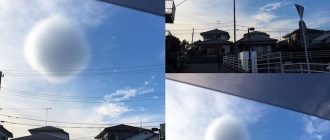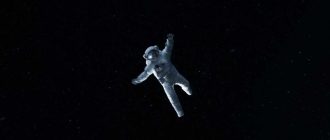
Researchers have discovered a ribbon of connected tentacle clones floating in the ocean off the coast of Australia.
Known in some regions as the 'long sticky thing', siphonophores blur the line between organ and body. They somehow manage to be both at the same time.
“It all looks like one animal, but many thousands of clones are forming an entity at a higher level,” marine biologist Stephen Siebert of Brown University told Wired.
The Ningaloo Canyons Expedition, a group of international researchers from institutions such as the Museum of Western Australia, the Schmidt Ocean Institute and the Scripps Institute of Oceanography, recently encountered one of these impressive 'aliens'.
They explored an under-explored but biologically rich part of the ocean off the coast of Western Australia using sonar. On the way back, a creature was seen:
Check out this beautiful giant siphonophore Apolemia recorded on #NingalooCanyons expedition. It seems likely that this specimen is the largest ever recorded, and in strange UFO-like feeding posture. Thanks @Caseywdunn for info @wamuseum @GeoscienceAus @CurtinUni @Scripps_Ocean pic.twitter.com/QirkIWDu6S
– Schmidt Ocean (@SchmidtOcean) April 6, 2020
“We were amazed when it appeared,” biologists Nerida Wilson and Lisa Kirkendale of the Museum of Western Australia told ScienceAlert. “People came to the control room from all over the ship. We've seen siphonophores before, but this one was both large and unusual.
“It looks like it's longer than any other animal on the planet.”
The outer ring was estimated to be approximately 47 meters long. The entire giant siphonophore is made up of tiny individuals called zooids. They clone themselves thousands of times into one of several variants – some have burning tentacles and even red baits to attract food, others specialize in reproduction or locomotion. Each acts as an organ in the larger body of the siphonophore.
Biologist Rebecca Helm of the University of North Carolina Asheville describes the feeding of the clones on Twitter:
Some of the clones specialize in catching prey. Their slender bodies hang with a single long tentacle dangling like a hook-studded fishing line. Like the frilled tentacles of another siphonophore pictured below…
(pic: @SchmidtOcean https://t.co/UIJt6aLSNn) pic.twitter.com/7nDOKFqSUZ– Open Ocean Exploration (@RebeccaRHelm) April 6, 2020
This vast colony must have at least millions of connected organs working together. They share their prey with each other, passing nutrients along the stem to which they are all connected – a vertical branch that also serves as a passageway for nerve signals.
Helm believes that there are a huge number of siphonophores floating in the ocean, as well as other strange creatures with which they interact – for example, this sea slug (Cephalopyge trematoides), which finds them tasty:
Sources: Photo: (@ SchmidtOcean / Twitter)






